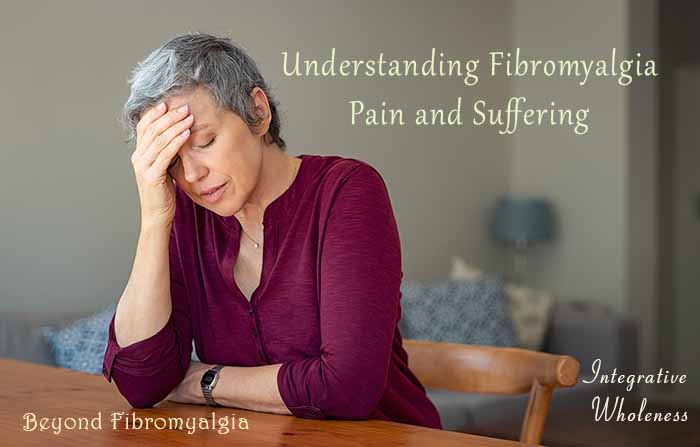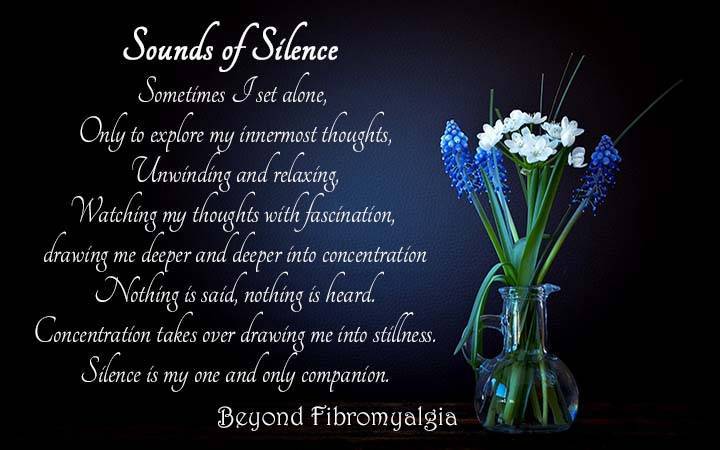
Understanding Fibromyalgia Pain and Suffering
Years ago, someone introduced me to the difference between pain and suffering. Until that time, I hadn’t made a distinction between the two. To me, pain and suffering was the same thing. Over the years, I began to begin to see the difference between the two . . . and that makes a huge difference in my experience. Let’s explore this and how it relates to women with fibromyalgia.
Pain
Although there are other kinds of pain, for this part of the conversation, I will define pain as a sensation in the body. We might have back pain, abdominal pain, headaches, neck and shoulder pain. Our legs might ache. We might have a burning sensation on our skin.
In this definition, pain is a sensation in the physical body. Take a moment now and bring your attention to a place in your body where you feel pain. Focus on that sensation as nothing more than a sensation in the body. Rate the sensation on a scale of 1-10. Ten being extremely intense, I gotta stop this and one being barely noticeable.
For a few moments simply observe the pain as a sensation and nothing more. And for an extra bonus, deepen your breath while you do so. Continue to observe the pain as sensation.
I am not saying to minimize the pain or the importance of it. I am saying to simply for a few moments to just be present with the pain. Watch what happens as you observe the pain.
Notice how successful you are at this or not. Can you be present with the pain without any thoughts about the pain other than it is a sensation in the body? Most of us can’t do that. For most of us, our mind will be filled with thoughts and emotions will arise.
Suffering
Now become aware of the mental and emotional content around the pain. I am not trying to minimize or marginalize your pain. But to help you differentiate the difference between the mental and emotional pain and the physical pain. Both are real. Both are painful. Both need to be addressed.
Now, as your focus on the sensation in your body, also become aware of your thoughts and the emotions you are feeling.
Do you feel sad, angry, frustrated, disappointed, resigned, upset, discouraged? What flavor is your emotion that is connected to the physical sensation in the body?
What thoughts come into your mind as you observe the sensation in the body? Here are a few out of an infinite number of possibilities. I hate this pain. It is my fault. Why did this happen to me? How can I get rid of this pain? I hope the doctors find a cure soon. Nobody believes me. Why don’t they understand how miserable I feel? I hate it when people tell me it is all in my head!
When we are dealing with fibromyalgia, we experience physical, emotional and mental pain. The emotional and mental part is what I called suffering. It magnifies the physical pain. This isn’t bad or wrong. It is simply a way to pull apart the elements in the matrix called fibromyalgia.
Why is this important?
This is important because it identifies and makes more conscious the puzzle pieces that make up the experience of fibromyalgia. The more aware and conscious we are of the pieces, the more empowered we are to transform the experience.
For example. You have pain in your abdomen. When you focus on that sensation, you begin to feel sad. You mind says, nobody hears me or understands me. This is a sign that there may be an emotional wound underlying the pain in your abdomen. Sub or unconscious cellular memories of a time when you were unheard and disrespected and misunderstood. With the right tools, the sub and unconscious cellular memories can be neutralized and can alleviate the pain.
This is a simple example, but it illustrates the underlying cause of some of our physical pain. There are other causes of physical pain as well. Here are links to some previous blogs that focus on the physical causes of pain. Anatomy of a Symptom and 12 Steps to Balance the Body
I know that this is a big trigger for many women with fibromyalgia. I know because I had it too. How often are women with fibromyalgia told things like: “It is all in your head”. “Your pain can’t be that bad”. “You are too sensitive.” “Everyone has pain.” “You are just lazy.” And when we are suffering and people say that it simply makes the pain worse.
I had a part of me that never felt valued, understood, respected, heard or loved. For me, that was just as painful as the physical pain. Maybe even worse. I think that many of us, as women with fibromyalgia, have a common emotional wound around not feeling heard and believed. My mom had that. I had that. Do you? What are your triggers? What is the predominate emotional pain in your life? That holds the key to part of the healing process.
Anxiety and Depression
Anxiety and depression are common symptoms of fibromyalgia. They are both signs that there are unresolved suppressed emotions, trauma and/or negative life experiences. This can be resolved with the right tools and support.
I am working on a program to assist women with fibromyalgia to move beyond these kinds of unresolved experiences. Stay tuned.
Awareness practice for this week:
Take some time to focus on the “sensations” in your body and notice your thoughts and emotions while you do so. See if you can discern unique patterns with different parts of the body. Have fun experimenting with this. It doesn’t need to be serious . . . unless it is.
May you discover the transformative power of self-love,
Bindu






